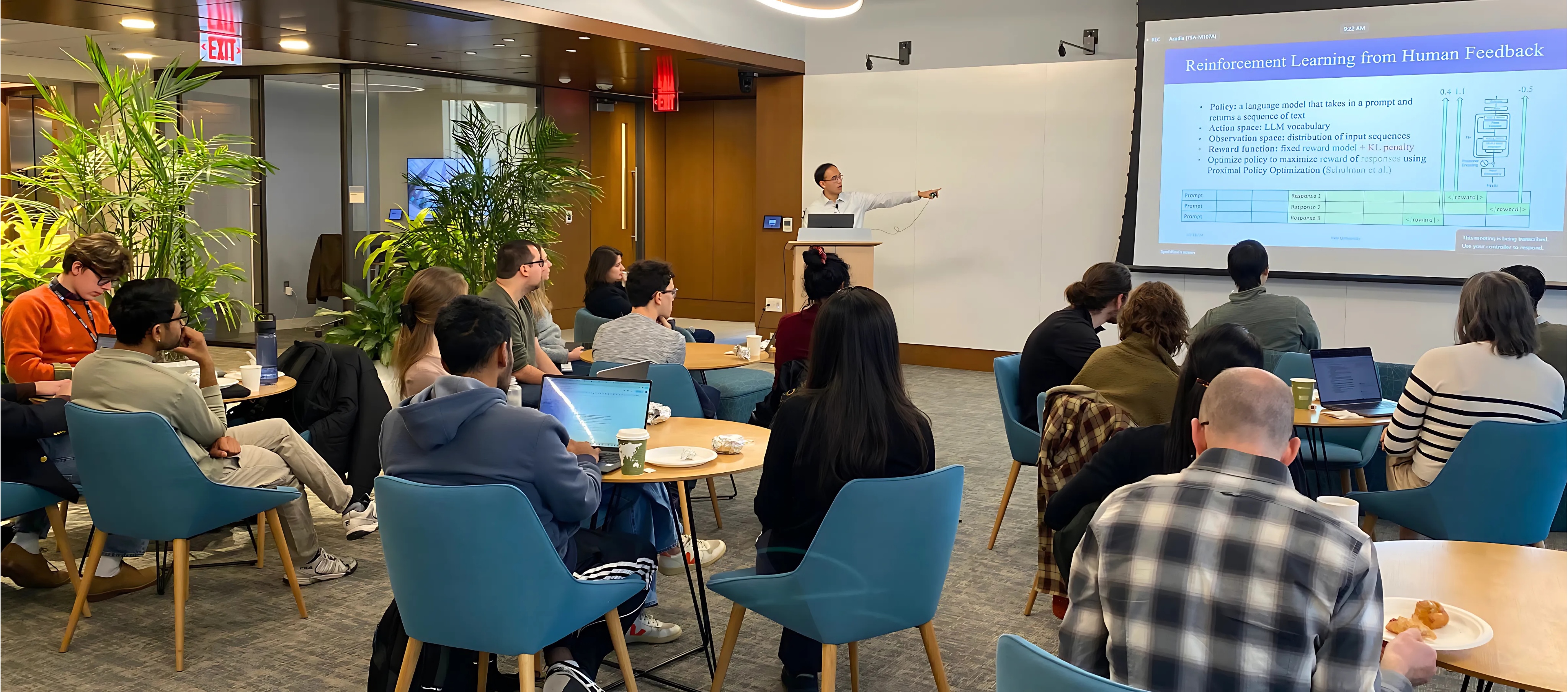

MEDIA INQUIRIES

Thank you for contacting the Eric and Wendy Schmidt Center. Your message has been received, and a staff member will get back to you shortly.
Oops! Something went wrong while submitting the form.

As spring unfolds and our 2025 Models, Inference & Algorithms (MIA) season gains momentum, we invite you to explore our upcoming April and May talks. Whether you're following along in real time or catching up during spring break, we encourage you to review our playlist of past MIA talks, which we will continue to update. In the meantime, we have compiled a recap of the fall 2024 MIA meetings, complete with links to each talk. Happy watching!

1 - We started our fall MIA season with lightning talks from Ph.D. students and postdoctoral fellows across the Schmidt Center (Vidhi Lalchand), Harvard (Randy Ellis), MIT (Bowen Jing, Hannes Stark, Andreas Luttens), and the Whitehead Institute (Henry Kilgore). Their presentations covered a broad spectrum of machine learning applications, including protein subcellular compartmentalization, DNA sequence and protein ensemble generation, and dementia prediction using human biobank data.

2 - Brian Cleary and Aedan Brown, a Ph.D. student in Cleary’s lab, explored evolutionary dynamics in complex genotype-to-phenotype relationships. Using metabolism as a model, they showed that selection at the genetic level can be difficult to pinpoint, while selection on collective modes—preferred directions in phenotype space—provides a clearer picture of evolutionary dynamics and polygenic trait variability.

3 - David van Dijk presented three recent methods from his lab based on the idea that biological systems function like languages, where molecular components interact combinatorially, much like words forming sentences. His talk highlighted how large language models (LLMs) are advancing single-cell analysis, following a primer by Syed A. Rizvi, a PhD student in van Dijk’s lab, on LLMs and biological foundation models.

4 - Ashkan Fakharzadeh Ghaan and Noah Trebesch, a postdoctoral fellow in his lab, discussed the use of advanced molecular dynamics simulation techniques to characterize the large-scale conformational transitions in molecular transporters – key drug targets that regulate cellular entry and exit. Their primer introduced the simulation techniques underlying their approach.

5 - Neriman Tokcan presented tensor methods as powerful tools for analyzing high-dimensional multi-omics data. By extending traditional matrices into multi-way arrays, tensor methods capture complex interactions among genomic variables such as genes, samples, conditions, and omics layers. She also introduced Consensus-Zero Inflated Poisson Tensor Factorization (C-ZIPTF), a method developed by her lab to improve the stability of tensor factorization for zero-inflated genomic data – a common phenomenon in genomics.

6 - Marnix Medema presented the ongoing efforts in his lab and the broader community to use computational and AI-driven methods to map the biosynthetic diversity of microbiome-derived metabolites and uncover their roles in microbe-microbe and host-microbe interactions. On the same topic, Victoria Pascal introduced gutSMASH, a tool for systematically analyzing microbial genomes for known and putative specialized primary metabolic gene clusters, and BiG-MAP, an algorithm for assessing gene cluster abundance and expression by using metagenomic and metatranscriptomic data as input.

7 - We concluded the fall season with a presentation by Abraham Gihawi and Steven Salzberg (videos not available), on cancer metagenomics. They explored the challenges of detecting microbiome DNA within tumor samples, addressing issues such as misclassified host sequencing reads and batch correction limitations.
Thank you for supporting the MIA community. We hope this recap makes it easy to revisit the highlights from fall 2024 and we look forward to seeing you at our future events!
